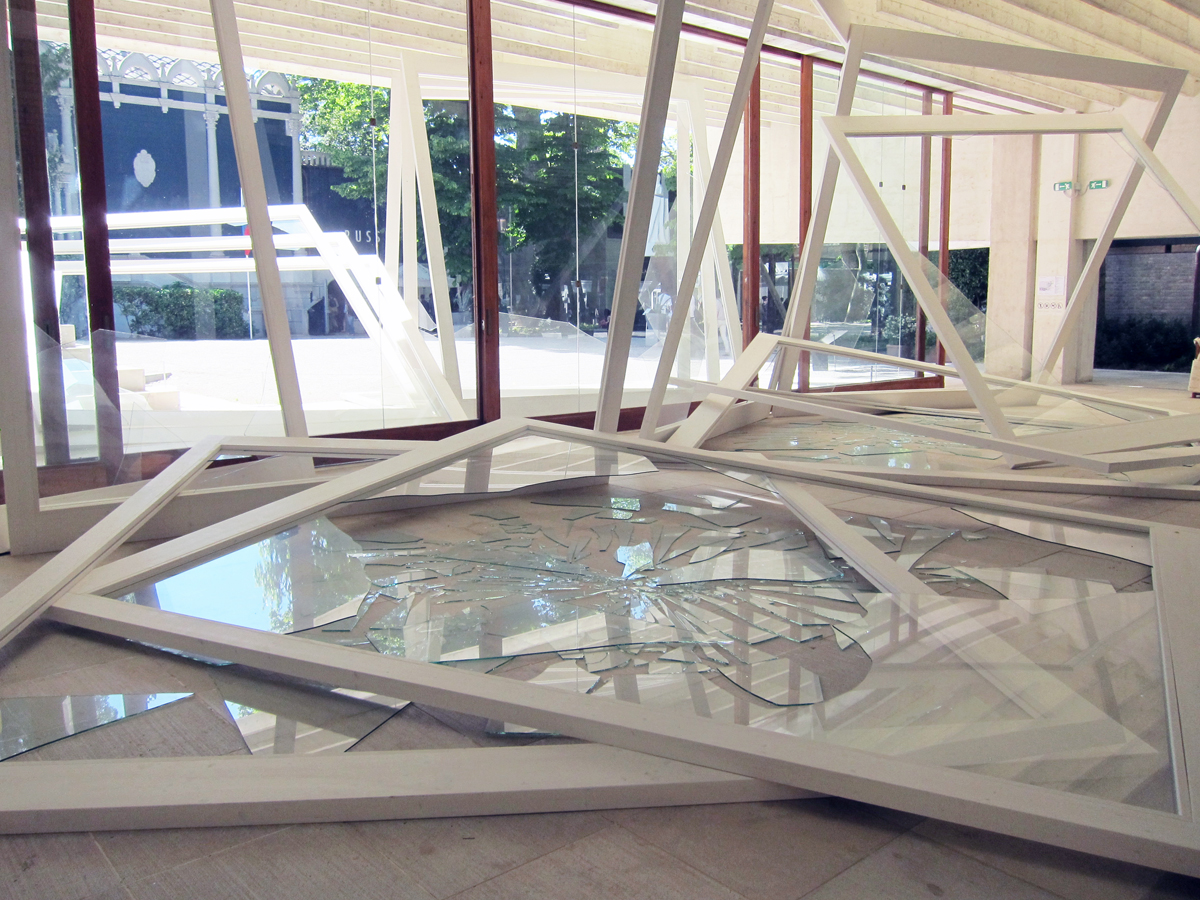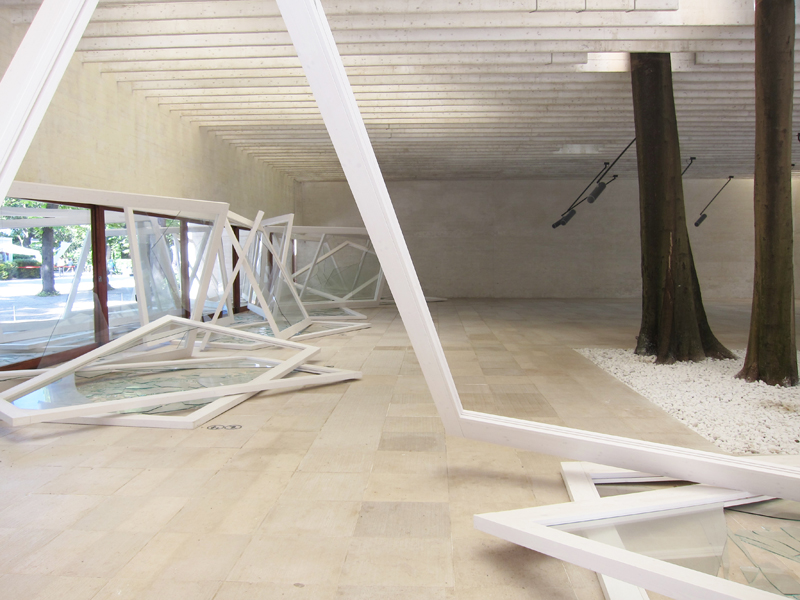selected work
objects/installations
Commissioned Solo Project for Venice Biennial of Art:
Solo exhibition Nordic Pavilion, performance series, 3-part publication
Installation: Mixed Media, including 12 voice chorus, glass armonica tones, audio devices
Performances:
6 May 2015: Camille Norment Trio, 2:30pm
7 May 2015: Camille Norment Trio, 2:30pm
8 May 2015: David Toop and Camille Norment, 5:00 pm
10 June 2015: Camille Norment Trio, 2:30 pm
11 June 2015: Featuring vocalist Sofia Jernberg, 2:30pm
12 June 2015: Camille Norment Trio, 2:30pm
20 - 22 November 2015: Camille Norment Trio Finissage Performances! Saturday, featuring Soia Jernberg. 2:30pm
Publication: Explores the broader sonic and social framework of Rapture's investigations. The full three-volume set is now available for purchase. Please send a purchase request and other inquiries through the contact form.











"Her cloaked approach delivered a political and interpersonal metaphor: dissonance does not go unnoticed." Flashart
'Rapture' is a three-part project consisting of 1) a solo exhibition in the Nordic Pavilion, 2) a series of sonic performances unfolding from physical and referential elements within the installation, and 3), a three-part publication that explores the greater context of the investigation through a variety of essays relating sound to the body and society.
Rupture bursts with the potential of rapture. The 'Rapture' project sits with the crossroads of historical trajectories and a zeitgeist reflection upon the current tension of changing and uncertain times. The calmness of the installation environment is itself an enveloping meditation upon the many narratives it houses. Emerging through histories of sound and the body, censorship and repression, national identity, the current suspense of the unknown future in the devastating face of change, 'Rapture' is a state of excitation.
'Rapture' relates the quivering of sympathetic vibrations to the tremors of shock waves in a phenomenological and socio-political reflection upon the body and mind’s relationship to trauma, ecstasy and the state of becoming. The body of the pavilion itself is subject to this experience, allowing visitors to witness, and enter within a body suspended in a state of excitation.
The body can be potentiated by sound. Composer Arne Nordheim's once said, “Music lives in the realm between poetry and catastrophe," and in 'Rapture', the visitor walks into such a sculptural and sonic installation of conflicting forces, a place torn between poetry and catastrophe, a space between a body in trauma and a body in rapture.
-
READ MORE +Through the sonic and sculptural elements in the installation, three spheres of agency, of action and reaction are addressed: 1) The experience of an individual body; 2) Phenomena within a localized socio-cultural sphere; and 3) Social experience that diagonally connects the individual body and personal experience to a larger political sphere.
The pavilion installation is a site-specific, sculptural and sonic environment that treats the pavilion itself as a body. The vast glass windows that form two external walls of the pavilion are multiplied in white, cascading frames amidst broken glass; a choreography suspended in time by a large vibrational force. The interplay of reflection and transparency give the windows a ghostly, yet momentous appearance. Several of the broken glass panes are themselves excited with tones from the glass armonica transmitted through attached sonic transducers. The glass armonica was adored during the Enlightenment period for its ‘angelic’ sound and its believed ability to heal and hypnotize. It was soon outlawed for fear of the power of its sound over the body and the belief that its stimulation could cause illness, social deviation, or sexual transgression in women. Made more explicit through the performances, there is also a reference to Jimi Hendrix who described his ecstatic use of guitar feedback as describing the sound of a body in pain. These elements reference social metaphors such as 'glass ceiling' and the etymological history of the word window - 'eye of the wind,' to relate excitation to social change.
Inside the pavilion, large boom microphones extend like projectiles from the ceiling, each emitting the sound of a single female voice whose articulated breathing exhales into one of two notes from a tritone interval – a chord once banned by the medieval church as the so-called ‘devil’s chord’ because of its unsettling sound. The microphone-speakers seem to be aimed out towards the windows, emphasizing the responsive relationship between the female voices and the exited glass, and suggesting a type of aggression or transgression. The broken glass responds to the chorus with tones that pierce the body of the pavilion and the visitors, as if they were stirred by the winds of the times.
'Rapture' contemplates social experience through considerations of vibration, modernity, sound, and pathology. The notion of ‘hysteria’ is referenced to trace, historicize, and connect trauma as experienced by an individual body (such as female hysteria, or chief curator of the Venice Biennial, Okwui Enwezor’s “drama of individual men”), to social traumas (such as mass hysteria or Enwezor’s description of the contemporary as the “age of anxiety”). ‘Hysteria’ interrelates notions of: the (historically) hysteric female body hypersensitive to vibrations, hysterical society, and hysterical architecture. Historically censored sonic entities such as the tritone interval (referred to as the devil’s chord in the Medieval period), the glass armonic, hardingfele, and electric guitar are tracers to ongoing contemporary narratives surrounding the power of music’s hold over the body, and further situate the installation’s reference to utopias and realities. The title ‘rapture’ refers to this interrelationship between sound, the body, and society; to ecstasy and rupture.
This site specific work was also inspired in part by the Norwegian architect Sverre Fehn's description of the building as a "shadowless pavilion" which complements previous works that reference shadows, or ghosting, to trace social phenomena. In 'Rapture', a grounding social reference is the terrorist acts of 22 July in Norway that forever changed the identity and perspectives of the nation, bringing latent shadows to the forefront.
'Rapture' mines history to reflect upon the global zeitgeist and yet its suspension suggests a potentiality in the locus of change.











"Her cloaked approach delivered a political and interpersonal metaphor: dissonance does not go unnoticed." Flashart
'Rapture' is a three-part project consisting of 1) a solo exhibition in the Nordic Pavilion, 2) a series of sonic performances unfolding from physical and referential elements within the installation, and 3), a three-part publication that explores the greater context of the investigation through a variety of essays relating sound to the body and society.
Rupture bursts with the potential of rapture. The 'Rapture' project sits with the crossroads of historical trajectories and a zeitgeist reflection upon the current tension of changing and uncertain times. The calmness of the installation environment is itself an enveloping meditation upon the many narratives it houses. Emerging through histories of sound and the body, censorship and repression, national identity, the current suspense of the unknown future in the devastating face of change, 'Rapture' is a state of excitation.
'Rapture' relates the quivering of sympathetic vibrations to the tremors of shock waves in a phenomenological and socio-political reflection upon the body and mind’s relationship to trauma, ecstasy and the state of becoming. The body of the pavilion itself is subject to this experience, allowing visitors to witness, and enter within a body suspended in a state of excitation.
The body can be potentiated by sound. Composer Arne Nordheim's once said, “Music lives in the realm between poetry and catastrophe," and in 'Rapture', the visitor walks into such a sculptural and sonic installation of conflicting forces, a place torn between poetry and catastrophe, a space between a body in trauma and a body in rapture.
-
READ MORE +Through the sonic and sculptural elements in the installation, three spheres of agency, of action and reaction are addressed: 1) The experience of an individual body; 2) Phenomena within a localized socio-cultural sphere; and 3) Social experience that diagonally connects the individual body and personal experience to a larger political sphere.
The pavilion installation is a site-specific, sculptural and sonic environment that treats the pavilion itself as a body. The vast glass windows that form two external walls of the pavilion are multiplied in white, cascading frames amidst broken glass; a choreography suspended in time by a large vibrational force. The interplay of reflection and transparency give the windows a ghostly, yet momentous appearance. Several of the broken glass panes are themselves excited with tones from the glass armonica transmitted through attached sonic transducers. The glass armonica was adored during the Enlightenment period for its ‘angelic’ sound and its believed ability to heal and hypnotize. It was soon outlawed for fear of the power of its sound over the body and the belief that its stimulation could cause illness, social deviation, or sexual transgression in women. Made more explicit through the performances, there is also a reference to Jimi Hendrix who described his ecstatic use of guitar feedback as describing the sound of a body in pain. These elements reference social metaphors such as 'glass ceiling' and the etymological history of the word window - 'eye of the wind,' to relate excitation to social change.
Inside the pavilion, large boom microphones extend like projectiles from the ceiling, each emitting the sound of a single female voice whose articulated breathing exhales into one of two notes from a tritone interval – a chord once banned by the medieval church as the so-called ‘devil’s chord’ because of its unsettling sound. The microphone-speakers seem to be aimed out towards the windows, emphasizing the responsive relationship between the female voices and the exited glass, and suggesting a type of aggression or transgression. The broken glass responds to the chorus with tones that pierce the body of the pavilion and the visitors, as if they were stirred by the winds of the times.
'Rapture' contemplates social experience through considerations of vibration, modernity, sound, and pathology. The notion of ‘hysteria’ is referenced to trace, historicize, and connect trauma as experienced by an individual body (such as female hysteria, or chief curator of the Venice Biennial, Okwui Enwezor’s “drama of individual men”), to social traumas (such as mass hysteria or Enwezor’s description of the contemporary as the “age of anxiety”). ‘Hysteria’ interrelates notions of: the (historically) hysteric female body hypersensitive to vibrations, hysterical society, and hysterical architecture. Historically censored sonic entities such as the tritone interval (referred to as the devil’s chord in the Medieval period), the glass armonic, hardingfele, and electric guitar are tracers to ongoing contemporary narratives surrounding the power of music’s hold over the body, and further situate the installation’s reference to utopias and realities. The title ‘rapture’ refers to this interrelationship between sound, the body, and society; to ecstasy and rupture.
This site specific work was also inspired in part by the Norwegian architect Sverre Fehn's description of the building as a "shadowless pavilion" which complements previous works that reference shadows, or ghosting, to trace social phenomena. In 'Rapture', a grounding social reference is the terrorist acts of 22 July in Norway that forever changed the identity and perspectives of the nation, bringing latent shadows to the forefront.
'Rapture' mines history to reflect upon the global zeitgeist and yet its suspension suggests a potentiality in the locus of change.
